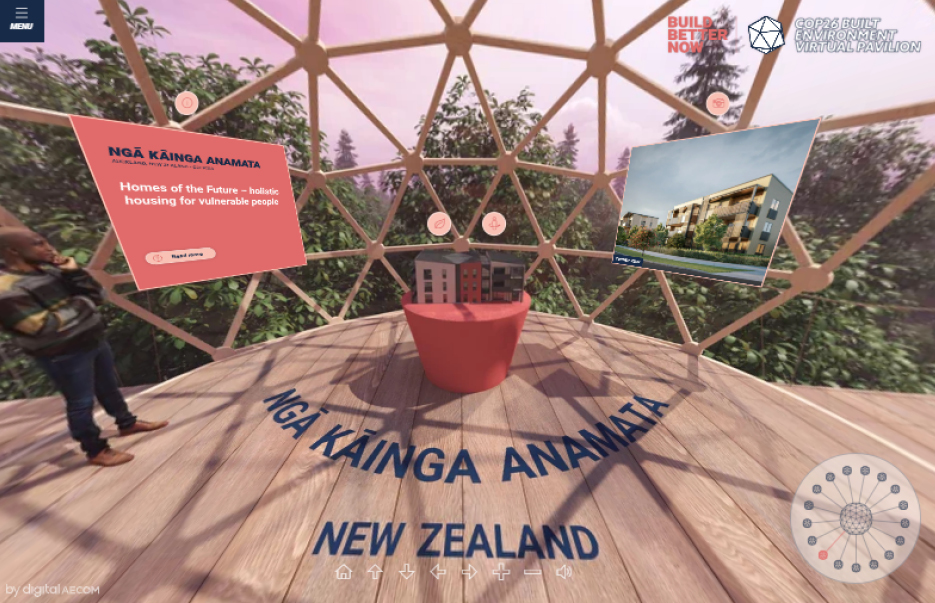
The client’s ambition at the beginning of the project was to understand what high-performance, low-carbon social housing would look like using New Zealand-sourced materials and building systems. The brief was to design five almost identical apartment buildings, but each from a different structural system: steel, concrete, light frame timber, mass/cross-laminated timber and a hybrid combination of light and mass timber. At this stage, the project was given the working title “5 Systems”.
Sustainability and lifecycle carbon mitigation was at the forefront from the programme’s inception, along with aspirations for each building to achieve Passive House certification and be net-zero energy.
R&D architecture – from theory to best practice
As we began the journey with Kāinga Ora, we soon realised there were many other possibilities to consider, to include and to reject as the project began to evolve, and at the time, we didn’t fully understand what the outcomes and deliverables could be.
Our Associate Aaron Galloway recalls, “This was a project unlike any other I‘d been involved with. By its very nature, R&D is something of a trial-and-error process. We didn’t have a script to follow and as a collective team (of client and suppliers), we had to work collaboratively to learn new terminology, techniques, and possibilities to achieve our goals.”
Galloway continues, “We needed to undertake an evidence-based approach to testing different construction methods that kept sustainability and the development of healthy, warm and affordable homes at the centre of the design process.”
The wider project team included BRANZ – an independent research organisation using evidence-based approaches to improve the performance of New Zealand building systems. Kāinga Ora tasked BRANZ with reviewing and analysing energy use, carbon footprint, moisture risks, lifecycle costs, and energy performance for the 5 Systems project.
As we worked on the designs from an architectural viewpoint, the calculations, data, analysis, and costings were reviewed by the wider project team which included: Aurecon (Passive House consultants), Robert Bird Group (structural engineers), and quantity surveyors Ortus International.
Talking about the experience, Galloway says, “As we worked through the design process, we frequently collaborated with the wider group to check and re-check that we were on target to produce high-performance, low-carbon buildings. Also, more importantly, that we were delivering performance benchmarking for the project as a whole. There were literally dozens of iterations, while we defined, designed, and refined.”
Collaboration and teamwork
A turning point for the project was a one-day workshop six months into the initiative, with the entire team gathered to review the work already undertaken. Learnings, data, and best practice were shared, and a fifth construction system was proposed using a light/mass timber hybrid. Following the workshop, as lead designers, we once again returned to the drawing board.
There followed an extended developed design process which included a three-month consultation period with construction industry experts to discover the best innovations, practices and materials being used in New Zealand. This allowed us to talk about the different approaches to building low-cost sustainable houses, from pre-fabrication to traditional construction methods.
Drawings were refined and reworked in the detailed design phase based on the key take-outs from these sessions, while BRANZ and the other partners in the project team ran the numbers to check the data was in line with the project’s objectives.
In the meantime, Brian Berg (Manager/Lead Carbon-Neutral Housing Team at Kāinga Ora), submitted 5 Systems as an entry at the 2021 Virtual Pavilion being hosted at COP26 – the United Nations climate change conference. This gave us impetus to create renders, 3D models, and fly-throughs to bring the designs to life, showcasing all elements of the project.
Introducing Ngā Kāinga Anamata
5 Systems has continued to evolve and has since been gifted the name Ngā Kāinga Anamata, te reo Māori for “Homes of the Future”. The data and learnings from this programme will influence and catalyse system transformation in the construction industry for years to come.
Galloway admits we are at the beginning of our construction industry carbon neutral journey, “This is just the start. The industry needs to continue looking at different approaches and methods to achieve desired outcomes.
“This R&D project has taught us that we can achieve higher-performing homes with carbon reduction. We now need to share what we have learnt so that industry can build healthier, drier, and warmer homes that are good for the planet, as well as affordable and relevant for everyone.”
You can find out more by visiting https://virtualpavilion.co/nga-kainga-anamata